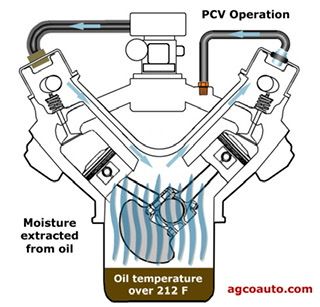The Simple PCV is kinda genius
So once again, I am quietly amazed by something very clever that does an important job very well.

So once again, I am quietly amazed by something very clever that does an important job very well, while also looking really, really simple. That is the Positive Crankcase Ventilation system, or the PCV.
So consider the 4 cylinder car engine. If you understand the 4-stroke system, you know there is ingestion, compression, combustion and exhaust phases. If you know how the cylinders are built, you'll also understand what piston rings are, essentially there to seal the piston into the cylinder and contain the combustion pressure, turning it into force to drive the crankshaft
Well, Piston Rings are usually not solid o-rings, but cut like c-rings, so that they compress into the cylinder. A downside is that this can cause tiny little leaks when under explosive pressure, which not only releases dirty gas out into the crankcase, which gets into the oil causing the kind of trouble you'd expect 'dirty oil' to cause, but can also increase the pressure in the crankcase, causing oil to leak. How can we stop this?

With this bad girl. A really, really elegant solution. Short version, the PCV (partnered with a filtered inlet) uses the vacuum created by demand at the inlet to draw in fresh air and flush out any exhaust vapour in the case through the PCV and back into the cylinder for re-use.
But that's not even the really clever bit. The valve is tapered and spring loaded. "So What?", I hear you ask? Well it's like that because inlet pressure differs as the throttle is opened, so:

- While the engine is off, the valve drops closed.
- While idle or slowing, the air intake is almost closed, so the little air needed has to be pulled in hard, causing high vacuum. This vacuum pulls the valve open all the way which also mostly blocks the passage (remember the tapering!) so venting is minimal - This is good because nothing much is happening in cylinder-land at this point.
- But with the throttle fully open the air intake is also wide open, so vacuum is low. In this case the valve is opened only part-way (remember the spring!) and the passage is fully open, allowing maximum ventilation during maximum cylinder action!
How fucking clever is that?!
